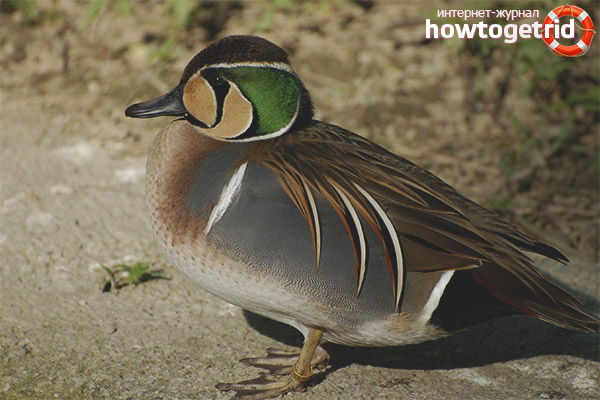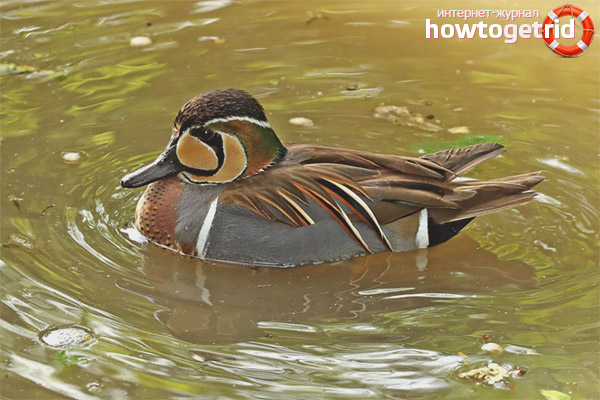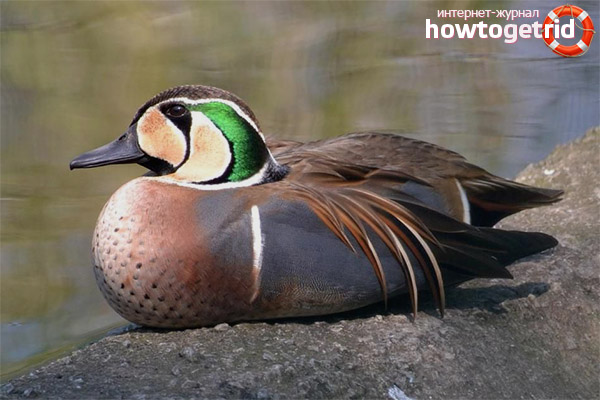The content of the article
Kloktuns are known to people who have visited Baikal at least once. Also, these birds prefer to live in Asian countries. Previously, they were in such uncountable quantities that they did not attach much importance to them. But due to the former peculiarity of the bumblebees, eating large families in easily accessible places, hunters began to shoot these animals. Therefore, the population began to decline strongly in number, birds gradually decreased in number. Today we will consider everything that affects their characteristics.
Habitat and features
Nests of these individuals can be found in the northern latitudes of our country. They live preferably in Siberia in the east and west. When the period of construction of nests and breeding begins, the birds stop on ponds and lakes. During wintering, they fly to warmer regions, for example, South Korea, Japan, and China.
Couples add up during the wintering process. The individuals find each other, then return to their open spaces and begin to nest. This usually happens in late spring. They build a house under a spreading willow or in the place where the nest will be hidden from predators and human eyes.
Since these birds are practically impossible to study, it is difficult to say for sure how their mating season occurs. A hidden lifestyle does not allow specialists to study everything in detail. When nesting ends, adults lose their plumage and cannot fly. This makes their life difficult and also puts them at risk.
Description
These birds do not belong to large-sized ones, because their body barely reaches 23 cm in length and weighs 0.6 kg. They are famous for their flight speed; they prefer not to go up to the sky too high. Birds are remembered, from their family they are somewhat larger than other teal.
In their hue, the plumage of the bird is such that ocher and greenish colors prevail in tone. Females are more modestly dressed up, they are rather brownish with dark fringing on feathers. On the beak, females have whitish spots.
A dark stripe is clearly visible in the eye area, and a little light above. These representatives of the species got their name because they emit sounds like "cloko".
Lifestyle
An individual of the breed group under discussion belongs to the category of teal. According to its overall features, it is larger, and the structure is more powerful and stronger. Birds prefer to settle in areas of the coast, as well as in marshy areas and lakes.
Prefers to nest exclusively in one area. This territory extends from Anadyr to the Yenisei.
These birds destroy rice fields, so they are constantly attacked by farmers. They are poisoned, caught by nets and other gear in order to somehow get rid of pests. Of course, this directly affects the population of individuals.
Nutrition
- The considered individuals, like most relatives, get food by hunting in various reservoirs. Birds immerse their beak in water and catch various animals. Kloktun has a large and strong tongue. It is with his help that he pushes the liquid out of the beak, on which the comb plates are located.
- As a result, the bird filters the water, leaving only food and nothing more in its beak. The main part of the diet of the considered individuals are various plants. The bird feeds on grass seeds and leaves that grow on land. Klokotuns also often feast on insects, snails and worms.
- Most of the time, these representatives spend on the banks of reservoirs. More than once it was noticed that such ducks wandered into a wooded area. In such places, birds feasted on ripe acorns. In the spring season, individuals often carry seeds that farmers sow. In winter, birds collect the remains of the crop.
Breeding
- In winter, birds do not show activity. The mating season begins in early spring. Males fight for the attention of females. As soon as the pair forms, individuals look for a place to nest. The female begins to lay eggs.
- She independently builds a nest and hatches on average up to 10 eggs. The male, in turn, does nothing. The female independently brings up and feeds offspring. After about 1 month, the chicks begin to be born. After some time, young growth tends to water.
Facts About Kloktunov
- Like most birds, kloktuny are on the verge of extinction. Due to the nature of the habitat, the individuals in question were at risk. The problem is that most of the life of birds feed on the fields. To a particular extent, they like rice checks.
- Due to its weakness for such a culture, a flock of kloktunov can seriously harm the crop. The problem is that farmers decided to fight ducks in all sorts of ways. Birds are simply massively exterminated. People use nets and poisons.
- These individuals are listed in the Red Book of the Russian Federation. Unfortunately, such birds belong to those whose numbers are significantly reduced. The ducks in question are protected by law for quite some time.
- However, poachers do not interfere with the destruction of birds in large numbers. Kloktuny remain the main problem of many farmers for many years. Ducks are used to feeding in the fields.
There is not enough information about the life of this bird to describe in detail. Kloktuns are extremely shy, try to bypass a person, stay away from predators. Usually live in areas closed to the eyes, into the area of which it is difficult to get.












Submit